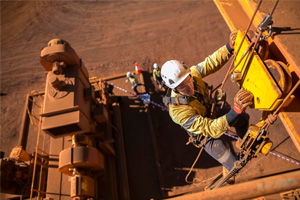Here’s something to think about: According to a Policy and Practice in Health and Safety study, 2017, construction organisations with a Zero Incidents policy and perfect safety records are the most likely places a fatality will occur. On the flip side, risk management portfolios that report multiple incidents tend to be the safest places to work.

Doesn’t make sense? The key words here are ‘policy’ and ‘report’. As Professor Sidney Dekker explains, accidents will always happen and putting pressure on workforces not to have them simply results in non-reporting.
After all, no workplace is 100% safe because conditions are constantly changing – such as workload, resource constraints, normal variability, the climate or equipment malfunction. So where individuals have a fear of disclosing near misses or odd slip-ups (due to strict policies and blame culture) there’s a very high likelihood that many incidents simply aren’t reported– leaving Managers unaware of potential hazards that could be life threatening.
Furthermore, many organisations that don’t encounter incidents may simply be lucky – which can lead to false and dangerous assumptions that their risk management policies are already adequate.
This is where the traditional Safety I approach can leave risk assessing at odds with long-term safety culture.
Looking at safety in its presence, rather than in its absence
While the traditional approach to workplace safety has always made sense, it hasn’t equated to an uptick in safety data. And we believe that’s largely due to:
- blame culture
- unrealistic and cumbersome safety policies from above
- lack of information flow – because people are afraid of how bad information is received from the leadership teams
- how managers imagine work is performed, rather than the way it is performed
- compliance policies not being cognoscente of frontline work realities
The graphs below demonstrate how over the past decade a rise in compliance to Safety I risk policies doesn’t dramatically result in reduced incidents.

With Safety II however, the way risk management is approached is turned on its head. Rather than focus on what only goes wrong during operations, it also asks what goes right, how it goes right and what are there potential risks involved in achieving desired outcomes?
Remember, for the vast majority of time, work output is successful – even if workers have compensated to get work done. It’s only when unforeseen conditions align in a certain way that you get an incident. This is where we need to have systems and safety mechanisms in place in case they do. As Safety professional Dr Todd Conklin says, “You don’t manage accidents; you manage the capacity to fail”.
A good example of this is driving a car. Even if the driver has a perfect record after many years of driving there’s still a chance they will be involved in a serious accident. That’s because we can’t control road surface, the weather, other drivers, or the likelihood of a large animal running on the road – along with countless other variables.
When an accident happens, investigating the driver is usually fruitless – as it won’t prevent similar accidents from happening. However, if the car had been designed with unique safety features to avoid collisions or reduce the impact of collisions, safety levels will rise for everyone.
What’s the first step for assessing risk?
It’s important to consult the subject matter experts: your workers on the frontline.
Only they know exactly what day-to-day challenges and routines are involved to achieve high output. They can also enlighten you on how they adaptto get jobs done. And they can identify what organisational procedures can be changed/put in place to alleviate their challenges and reduce risks.
Naturally, this is where a large amount of humble pie will need to be consumed. As mentioned in Dr Todd Conklin’s address at the Quanta Risk and Safety Conference, 2019, you’ll need to admit that you don’t know everything and that your existing policies may even be getting in the way of your workforce performing their duties.
It’s also important to reduce downward pressure on workers and promote a physiologically safe work place for honesty, disclosure and ownership of safer work practices.
How Investigations Differently approaches risk assessment

Many organisations rely on semi-qualitative risk assessment processes to identify hazards and manage risks. This often results in a ‘cut and paste’ exercise that changes little.
We recommend a dramatically different scientific approach that is well-tested and culturally focused. Key criteria includes:
- Identify what ‘normal work’ is (rather than what’s imagined) with your teams through thorough interviews and observance to understand how each day looks, what their struggles are, and what they need to do to get their jobs done
- Look at the gap between known and unknown risks – where they could lurk, and the conditions you may not be aware of that could trigger incidents
- Identify and address any unintentional organisational bias that may exist with your current risk management approach
- Understand the allocation and optimisation of resources, and how to develop a different cultural approach towards risk management
- Demand innovation when selecting controls with a preference to implement elimination, substitution or engineering controls
- Asses you’re the current risk management policies to see if they are hindering the workforce
- Develop recommendations bespoke to the organisation’s requirements and situations
- Train/educate managers and workers to understand and support the new approach and adopt a new culture
In taking the above approach, there are no guarantees that future accidents won’t happen. However, you will be in a better position to put proactive safety measures in place to ensure serious injury is minimised.
Questions? Thoughts? Feel free to drop me an email

Mark Alston
Director Investigations Differently

